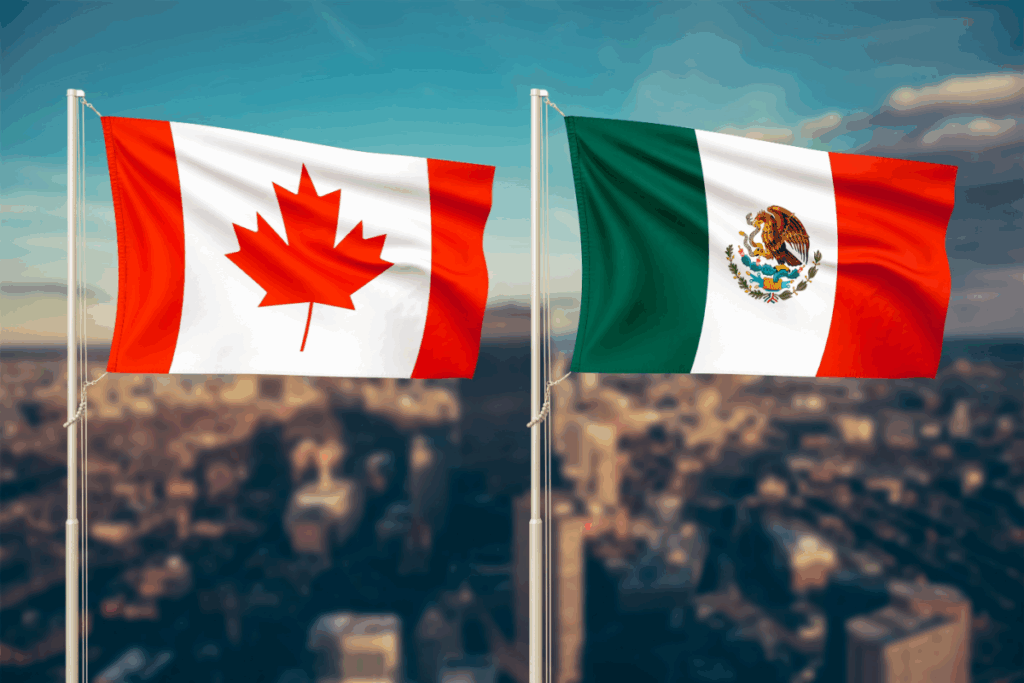Canadian Ministers Head to Mexico for Strategic Talks
Two of Canada’s top cabinet officials are in Mexico for high-level meetings aimed at reinforcing trade cooperation and addressing regional challenges. Finance Minister François-Philippe Champagne and Foreign Affairs Minister Anita Anand are leading the Canadian delegation in a series of discussions with Mexican authorities, including a scheduled meeting with President Claudia Sheinbaum.
The visit comes at a critical moment. Both Canada and Mexico are recalibrating their trade strategies following failed negotiations with the United States. While the U.S. imposed a sharp tariff increase on Canadian goods, Mexico secured a 90-day extension to continue its trade dialogue. These developments have intensified efforts in Ottawa and Mexico City to coordinate positions and defend their shared interest in maintaining open, rules-based trade.
Tariff Pressure Accelerates Diplomatic Engagement
Canada is facing significant economic strain after the U.S. raised blanket tariffs on Canadian exports, lifting them from 25 to 35 percent. These tariffs, however, exclude products compliant with USMCA rules of origin, which has allowed a portion of trade to continue tariff-free. In contrast, Mexico avoided immediate penalties by opting for a quieter diplomatic approach, resulting in more time to renegotiate.
Despite the setback, Canadian officials remain committed to constructive engagement with the U.S. and continue to seek a resolution. Prime Minister Mark Carney is expected to hold direct conversations with President Trump to reduce trade tensions. Canadian trade officials have emphasized recent communication with U.S. counterparts, but acknowledge that a near-term agreement remains unlikely.
USMCA and Regional Alliances Take Priority
Both Canada and Mexico have reaffirmed their commitment to the USMCA framework, originally signed during Trump’s previous term. President Sheinbaum and Prime Minister Carney previously agreed to bolster bilateral collaboration and ensure that the trade pact continues to be respected amid political changes in Washington.
For Canada, Mexico has become a cornerstone in its strategy to diversify trade beyond the U.S. market. Export Development Canada already recognizes Mexico as the country’s third-largest trading partner and the top export destination in Latin America. British Columbia, for instance, recently established a new trade office in Mexico to deepen economic engagement.
The Business Council of Canada views the Mexico trip as a foundation for a future visit by the prime minister himself. Analysts suggest that leveraging Mexico’s shared democratic values and pro-trade stance could serve as a powerful counterbalance to the uncertainty generated by American protectionism.
Fentanyl Dispute Adds Complexity to Trade Talks
The trade tensions are further complicated by the U.S. administration’s claims linking tariffs to drug trafficking concerns. President Trump has cited insufficient action on opioid smuggling—specifically fentanyl—as a justification for sweeping economic penalties.
Canada has rejected these accusations, maintaining that the volume of fentanyl entering the U.S. from its territory is minimal. Still, Ottawa has stepped up efforts to reinforce its border and appointed a dedicated official to oversee anti-fentanyl measures. Officials argue that these actions demonstrate Canada’s commitment to regional security and should help defuse the narrative used to impose tariffs.
As both nations work to protect their economies and strengthen regional ties, the current talks in Mexico City mark a pivotal moment for redefining the North American trade landscape outside Washington’s shadow. The coming weeks will reveal whether this joint approach can shift the balance and secure more favorable conditions for both countries.



